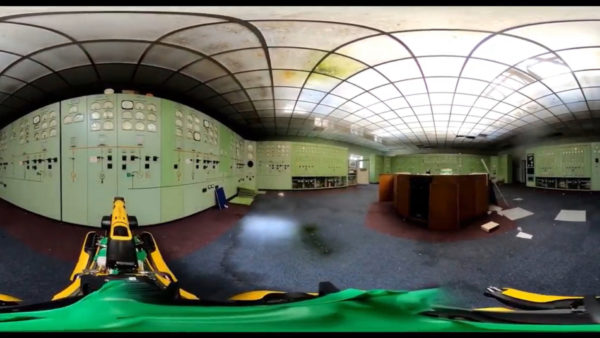For the fifth in our series of digital roundtable discussions run by the Centre for Digital Built Britain in association with Chartered Institute of Building, we looked at how SMEs are faring with BIM, the rewards some are already reaping and the obstacles they are encountering.
Embracing BIM gives SMEs a real opportunity to achieve competitive advantage, win repeat business, drive down costs and deliver better quality outcomes. However, they are also facing significant challenges, including a lack of BIM maturity among clients and other supply chain partners, contracts that don’t ask for BIM deliverables, and the cost of software and the complexity of licensing it.
These were some of the key issues emerging from a lively discussion between a group of SMEs spanning construction, architecture, engineering, quantity surveying and project management who had gathered for the fifth in our series of digital debates organised by the Centre for Digital Built Britain (CDBB) and the Chartered Institute of Building (CIOB). CDBB will use these sessions, which are also covering academia, Tier 1 constructors, consultants, manufacturers, technology providers, facilities management (FM) suppliers and clients, to help understand how BIM is being adopted and to inform future work.

Collaborative working through the whole process using not only designers but also our supply chain and off-site manufacturing was a massive change. It has meant we can reduce our costs, create a sustainable profit and deliver a really good product.– Malcolm Clarke, Baxall Construction
The debate was chaired by Terry Stocks, leader of the CDBB BIM Level 2 workstream. He began by asking the participants about their respective experiences of BIM. While there were some differences in the extent to which they had adopted it, the one thing they all had in common was a conviction that BIM is helping them to grow their businesses.
In a highly competitive market with “over 30 architecture practices with the same postcode as us,” explained architect, David Miller, “we decided to reimagine our practice around a technological way of working”. BIM has been embedded in his organisation for the last 10 years and this is paying dividends both in repeat business and in extending their role in projects. “The practices that have adopted robust quality management techniques are able to stay with their projects and develop relationships with contractors as well clients.”
Malcolm Clarke, danaging director of Baxall Construction, is also convinced of the merits of digital transformation and has seen his company’s growth accelerate in the last five years as a direct result. “Collaborative working through the whole process using not only designers but also our supply chain and off-site manufacturing was a massive change. It has meant we can reduce our costs, create a sustainable profit and deliver a really good product.”
Taking a digital approach has enabled his firm to achieve net profits that are significantly higher than the industry norm, allowing it to invest in further innovation. Clarke concluded: “The biggest game changer is cutting out the waste. By getting better models and better clash detection you are saving thousands of pounds.”
Allister Lewis, head of technology at Ayre Chamberlain Gaunt Architects, agreed that BIM is delivering significant benefits to clients, both as a result of more competitive fee submissions and through the quality of outcomes.
However, BIM is not only about saving costs and being more efficient. Lewis went on to say: “As well as the monetary value, people are working more collaboratively and, arguably, that’s the biggest improvement.” Faulkner added: “What we deliver in terms of the drawings and the models are a lot better, but also what we are designing is better.”
However, Steve Faulkner, associate director at structural engineers Elliott Wood and Chair of the IStructE BIM panel, issued a reality check about how widely BIM is being implemented. “At Elliott Wood we’ve used Revit for over 10 years. We understand BIM. But although we are continually told ‘this is a BIM Level 2 project’ we probably haven’t ever had one proper project – we are just doing bits and pieces.”
The SMEs stressed that even if their clients did not ask for a clearly defined set of BIM deliverables, they still opt to work digitally because it is more efficient to do so and gives them a better output.
Faulkner went on to flag up another key issue for the sector. At the moment, the data that Elliott Wood embeds in a model needs to be validated by the recipient.
Andrew Turner, partner at Henry Riley, confirmed that this is a problem: “Even today I’d say I’ve never received a model from any designer that I’ve been able to use correctly on day one.” The participants agreed that being able to embed robust data in models that can be used for quantity extraction would bring significant benefits to the sector as a whole.
Challenges for SMEs
While the roundtable participants were all persuaded of the merits of BIM, they acknowledged that putting it into practice can be challenging. As an SME, finding other small contractors to work with can be a problem. Architect Patrick Wilson said: “You are struggling to find anybody who understands, still less is implementing, anything that approaches digital information transfer.”
In this regard, fellow architect Lewis also pointed to what he considers to be a two-tier system with a lot of expertise in London but patchier representation regionally. He thinks the BIM mandate has been strong in supporting central government departments but there has been less focus on local authorities which has diluted the opportunity for a wider scale engagement. He is concerned that: “This could lead to a digital divide in the construction sector between those who do and those who do not do BIM.”

SMEs are geared up to embrace the BIM principles and to work in a more collaborative manner and they can be more agile. Facilities management and the client can extract data across the lifecycle of the building together to make it work better.– Elizaveta Bell, CD International Building Services Engineers
It was evident from the discussion that there are opportunities for clients to change the way in which projects are initiated. Collaborative working is one such area. Lewis explained that inefficiencies often result from multidisciplinary teams not being established at the start of the project. “It’s typical that it might only be at stage three by the time you have a whole team together because the client won’t appoint early enough.”
Stocks asked the group how they could persuade clients of the benefits of engaging fully with BIM and help them to: “understand that they will benefit from more predictable timescales, less disruption on handover, fewer or no defects, a better quality asset and a data set that they can use across the whole lifecycle of the building which allows them to work more effectively with FM providers.” Clients are in fact the ‘Big Winners’ with BIM.
Clarke recommended that SMEs use key performance indicators to provide the evidence that their projects “are, for example, achieving close to zero defects at handover or that the energy use on the buildings you are designing and delivering is 20% lower than the benchmark.” Stocks also noted PWC’s recent BIM Benefits model and report (available on the CDBB website) which presents a method to measure these outcomes.
Another challenge the participants raised was the lack of accessible common data environments. The existing ones “are aimed at main contractors. There’s nothing out there that works straight out of the box that is structured for BIM Level 2,” said Clarke. There was universal agreement that a simple low-level ISO 19650 compliant utility is needed for SMEs.
Stocks asked if modern manufacturing methods such as Platform DfMA, modularisation and componentisation (which were discussed in detail in the fourth roundtable attended by manufacturers) are going to make things harder or easier for SMEs. Again, there was consensus that this was a positive direction of travel and one that made sense for the sector as a whole to drive efficiencies and deliver better outcomes. Clarke sees it as an opportunity to change the Tier 1 contracting model, allowing SMEs to work directly with manufacturers.
In spite of the challenges they have encountered, all the SMEs present were convinced of the benefits of BIM. Clarke summed it up: “It’s an interesting journey but also a fantastic one. It is going to be a really great next ten years.”
In summary
Reviewing the discussion, Stocks suggested that SMEs are, in some ways, better placed than their larger, less agile counterparts to drive change through their organisations and to recruit and retain staff with the right skills (see box). The success demonstrated by those attending the roundtable should act as a spur both to other SMEs and to their clients, showing what can be achieved through the adoption of digital practices and collaborative working.
The SMEs all believed that their investment in BIM has made a significant difference to their organisations and will give lead to more opportunities in the future. The challenges they face largely arise from a lack of maturity across the sector as whole, resulting in inconsistency in procurement practices and insufficient collaborative working. These can be addressed by helping clients better understand the benefits BIM can offer them.
Getting the right people
Skills are an issue for businesses of all sizes, and in some ways the SMEs felt they were more able to recruit and retain the right staff than some of the bigger players. The participants were all committed to training.

Clarke said: “SMEs have got a better opportunity of attracting people to those roles and then holding onto them. If you talk to someone about BIM and they are in an organisation where it isn’t really happening, they are frustrated.”
“We take on young people and train them up,” said Faulkner, “send them off to college and uni, and look after them and then you get that sort of loyalty and they understand the way you work.”
Miller (right) was impressed by the digital skills young people have. “We do lots of work experience throughout the year with 15 and 16-year-olds. By the end of the week they’ve built a Revit model, animated it and produced the report.”
However, their strong digital skills are generally not matched by their knowledge of construction. The SMEs agreed that the way in which degree courses are structured does not give graduates a fully rounded understanding of the sector and, hence, the ability to work in collaborative teams.
What are the unique opportunities and challenges for SMEs in relation to BIM Level 2, and what could be done to help improve delivery?
David Millar, David Millar Architects
The agility of small organisations is a real opportunity. What could be done to help? A common data environment that works straight out of the box and has all the naming structures and everything in place would mean that people could start to be BIM-compliant without necessarily even realising that they are doing it.
Models of procurement that encourage and recognise the advantages of having the right people doing the right job, rather than seeing low-risk as being associated with large organisations.
Steve Faulkner, Elliot Wood
You can produce a higher quality of product and this will win you repeat work. If you get your processes right you can be much more efficient. Our challenges include not being given the same opportunities as the bigger firms, our clients don’t always know what they are asking for and the software and technology vendors develop their tools and price them firmly with large companies in mind. For organisations like us it’s a real challenge to work out how to afford them, but also how to manage them.
Allister Lewis, Ayre Chamberlain Gaunt Architects
New technology should lead to better buildings across the lifecycle. There are also opportunities abroad to sell our skills. It’s about increasing productivity, being efficient, being better, faster and quicker at what we do but still keeping that quality level high.
We need greater client training and informing. And SMEs need to have a strategic person or an ambitious team to drive that understanding of adoption of new technology or BIM processes.
Elizaveta Bell, CD International Building Services Engineers
There is an opportunity to create more sustainable buildings. SMEs are geared up to embrace the BIM principles and to work in a more collaborative manner and they can be more agile. Facilities management and the client can extract data across the lifecycle of the building together to make it work better.
Patrick Wilson, Patrick Wilson Architects
The opportunities are to rapidly enter a new market. The challenge is being able to cope with the continuing change of requirements and different sectors. Something like 80% of architects work in practices of between one and five people. If you take one person out to keep up with BIM, that’s significant fee earning time. We need to have better standardisation of the data schem and a consistent delivery of data, regardless of who is producing it.
Andrew Turner, Henry Riley
If you are an SME, just understanding what Level 2 BIM is, is the first problem. We took six months, we bought a piece of software, we invested a lot of time in understanding it before we spent any physical capital.
The benefit of BIM is being able to deliver lots of small projects quickly, especially from a quantity surveying point of view we worked out very quickly how we could become efficient. Some of our clients are looking to move into that more digital world and if you don’t have those capabilities you are going to get left behind. I see the opportunities being in FM, being able to do a capital cost plan and a lifecycle cost plan at the same time.
Malcolm Clarke, Baxall Construction
The leadership of any organisation, small or large, can create a culture that is about continuous improvement. Once you start to get that to work then everything else will slot into place. SMEs need to demonstrate what they are doing better than large organisations, because invariably they are.
I believe that the culture of our industry needs to be about delivering a product and it goes beyond just the design and the construction phase. If the people in the building are performing better, have less absenteeism, less turnover of staff then the extra cost of doing that slightly more expensive building is worth it.
Key takeaways from the debate
- BIM helps SMEs increase their productivity and margins and generate repeat business.
- If clients do not engage with the BIM delivery process they potentially lose out on quality and whole life value.
- If clients or contractors are not able to support BIM, SMEs take a pragmatic approach to digital delivery and use it to improve their own processes and outcomes.
- Significant efficiencies could be achieved if data embedded within models did not have to be validated by receiving parties.
- Multidisciplinary design teams should be formed earlier in the process.
- Software providers need to develop – and price – products that work for SMEs.
- SMEs can be more agile than larger companies and, as a result, can find it easier to embed BIM throughout their organisations.
- Standard information templates and data schemas would help support a wider take up of BIM.
- The benefits of BIM need to be demonstrated more effectively by SMEs using key performance indicators and developing case studies.
- SMEs have an important role to play in attracting new people into the sector who are interested in new ways of working.













